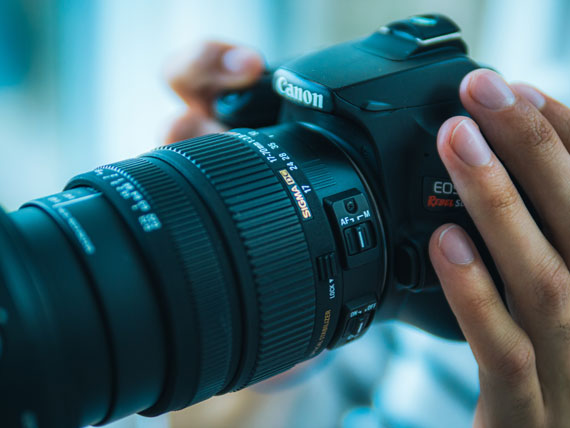Automatic focus (AF) has come a long way in modern cameras. Leica came out with some of the first patents for AF back in the mid-1970s and some of the early attempts to implement the feature on a wide basis were less than stellar. Most used either infrared light or sound to measure the distance to the subject and were easily confused by glass, rain and other obstructions. You could actually hear the motors whirring as a set of gears in the camera manually turned the lens focus and the old cameras had a tendency to hunt around for focus, a process that could take quite a long time.

Photo captured by Maxime Dore
Today AF systems are a modern marvel of speed and engineering excellence. Most of the focusing motors in high end cameras have moved from the camera body to the lens and they are virtually silent. Modern DSLRs don’t have a single point of focus, in some cases they have dozens and a mechanism for the photographer to cycle through or otherwise adjust the point of focus. The new AF systems are now lightning fast and are able to adjust faster than your eye can see the change.
For all of the marvel and improvement technology has brought to AF systems, there are still going to be times when you need to turn the AF switch to off and focus manually.
The most common times when AF has trouble is in low light situations. Some cameras have infrared lights (IR) that help the camera focus, others use a quick pre-flash from the on-camera flash to let the AF see the subject clearly. Sometimes the IR will do the job, but not always. Phase and contrast detect AF systems are still vulnerable to confusion in mixed light situations, like a stage where the performer may be lighted better than the people in the audience.
Another situation that can confuse AF are shots with a lot of sky in them. Sometimes, when there is no subject or it’s difficult to detect, the AF system will simply start hunting around. On some cameras, if the AF isn’t locked when you push the shutter button nothing happens! There’s nothing quite like the visceral feeling of watching a fleeting shot disappear while you’re hammering on the shutter button like a mad person and the camera insists on waiting for the AF first.
That’s why, even today, it’s a good idea to practice focusing with the AF turned off. One of the best places to do that is a dog park. Dogs don’t get self-conscious when having their picture taken and are usually running around and just having a blast. You will learn to focus extremely fast by hand and, given that you’ll be working in daylight, you’ll be using an f-stop that will give you some latitude on the focus point.

“The Concert” captured by PictureSocial member Per Janus
It’s good to practice focus in a situation where it’s not important before you get hired to shoot a concert or musical event, one of those situations where you might want to take over from the AF system. AF is a wonderful tool, but do be aware of the limitations.
About the Author:
Peter Timko writes for Proud Photography, an online photography school.
- - - - - - - - - - - - - - - - - - - - - - - - - - - - - - - - - - - - - - - - - - - - - - - - - - - - - - - - - - - - - - - - - - - - - - - - - -
Did you appreciate this newsletter? Please help us keep it going by Joining Our Patreon Supporters
What are your thoughts on this article? Join the discussion on our Facebook Page
PictureCorrect subscribers can also learn more today with our #1 bestseller: The Photography Tutorial eBook
- - - - - - - - - - - - - - - - - - - - - - - - - - - - - - - - - - - - - - - - - - - - - - - - - - - - - - - - - - - - - - - - - - - - - - - - - -
The post Understanding the Limits of Autofocus on Digital Cameras appeared first in the Photography Tips category on PictureCorrect.
from PictureCorrect https://ift.tt/FOqik9y
via IFTTT






0 kommenttia:
Lähetä kommentti